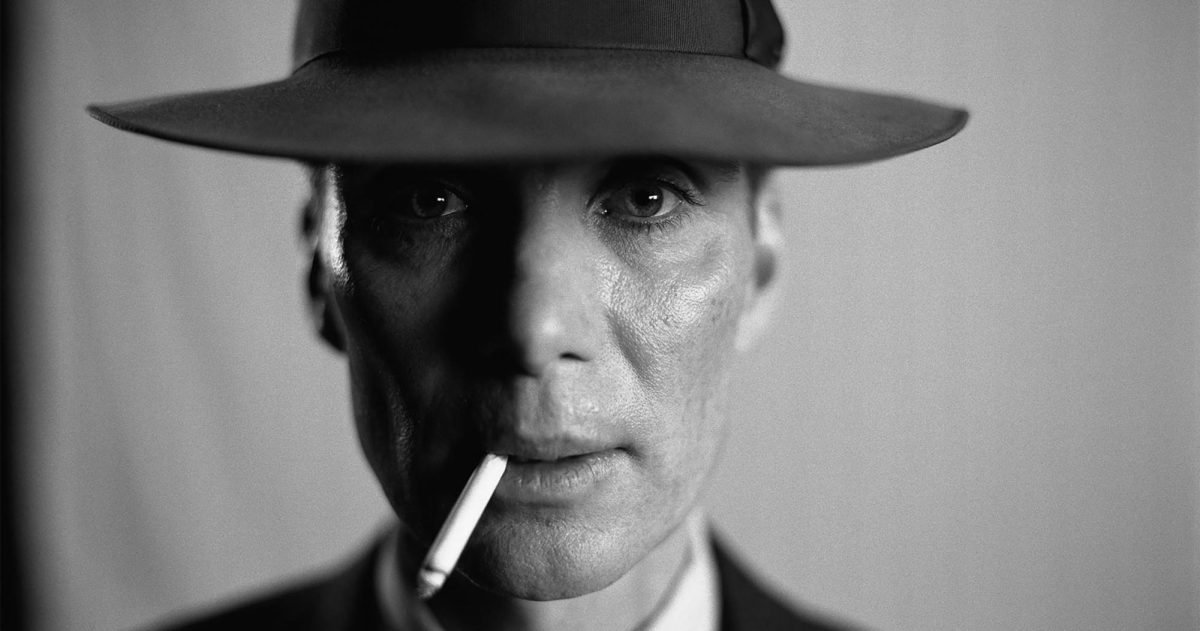Before the sun had risen over the northern edge of the New Mexico desert, a new light engulfed the night sky as flames filled the air. An event that would mark the first detonation of a nuclear weapon and Christoper Nolan’s new film “Oppenheimer” paints that picture on the big screen and immerses the audience in the world of J. Robert Oppenheimer.
Oppenheimer, known as “the father of the atomic bomb” dreamed of the stars and particles that surrounded the universe, transfixed by the puddles of water smacking into one another. The famous theoretical physicist whose reputation precedes him has his life condensed into a three-hour, war-period piece.
Written and directed by Nolan, this film draws inspiration from the book “American Prometheus: The Triumph and Tragedy of J. Robert Oppenheimer” which depicts his life and role in the Manhattan Project and the atomic bomb that defined his legacy and shaped this film.
As the film unfolds in a timeline, Nolan weaves together scientific personalities, romantic relationships, courtroom drama and laboratory sessions to tell the story of the building of the atomic bomb and the mind behind Oppenheimer.
An appealing process and a showcase of history that draws viewers in, but the magnitude of the bombings that followed in the aftermath saturates the film as Oppenheimer deals with aftershocks and guilt from the terrible revelation he brought to the world.
As subatomic particles weave across the screen, the first act starts in the 1920s as Oppenheimer, played by Cillian Murphy, spans his youthful years studying at European universities.
Nolan immerses the audience in the whirlwind of Oppenheimer’s life as the film touches on his personal and professional milestones during different periods.
By the late 1920s, Oppie (as his close friends called him) decided to transfer to Berkeley to teach and bring his knowledge of quantum physics to America.
His time at Berkeley is where his life dramatically shifts, as he meets military head Leslie Groves (Matt Damon), who appoints him the director of Los Alamos, the town where the bomb would be made.
As the movie progresses, we see glimpses of Oppenheimer’s life, the controversies he was surrounded by, the political attacks that drowned him in deep troubles and his friendships and romances.
Nolan captures Oppenheimer’s life perfectly throughout the film, his affair with American communist Jean Tatlock (Florence Pugh), and his relationship with his ex-communist wife Kitty Harrison (Emily Blunt) as she stood by him in his deepest troubles.
Though the two ladies have limited roles, they both give standout performances, leaving the audience wanting more.
This narrative continues as Nolan shifts his audience to the town of Los Alamos, where he ushers scientists to the big screen including Ernest Lawernce (Josh Hartnett), a physicist who played a role in the Manhattan Project.
Getting a glimpse of the creation of the atomic bomb while the movie is loaded with familiar faces like Gary Oldman, Casey Affleck and Robert Downey Jr., who has a standout performance in the movie, all seemed mesmerizing.
As the second act rolls by, Downey’s transformation into the character of Lewis Strauss, a former chairman of the Energy Commission who secretly orders a witch hunt that damaged Oppenheimer’s reputation and security clearance, allows the audience to root for Oppenheimer.
However, one thing that Nolan integrated into the movie was black-and-white sequences that defined the last third of “Oppenheimer.” They can feel long at times, but it does illuminate that feeling of watching a movie during the Old Hollywood era.
With all its complexities, Nolan puts the finishing touches to the film as Oppenheimer questions if the Trinity test would soon lead to a chain of events of a nuclear apocalypse.
The film is a victory for those seeking an epic war-period piece and a standout in Nolan’s catalog. While I enjoyed the film and would recommend it to others, it does leave a distressed feeling in me that one day, we could become the destroyer of worlds.
Erik Acosta is the web and copy editor and may be reached at [email protected]








